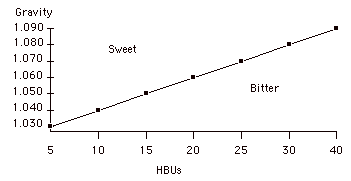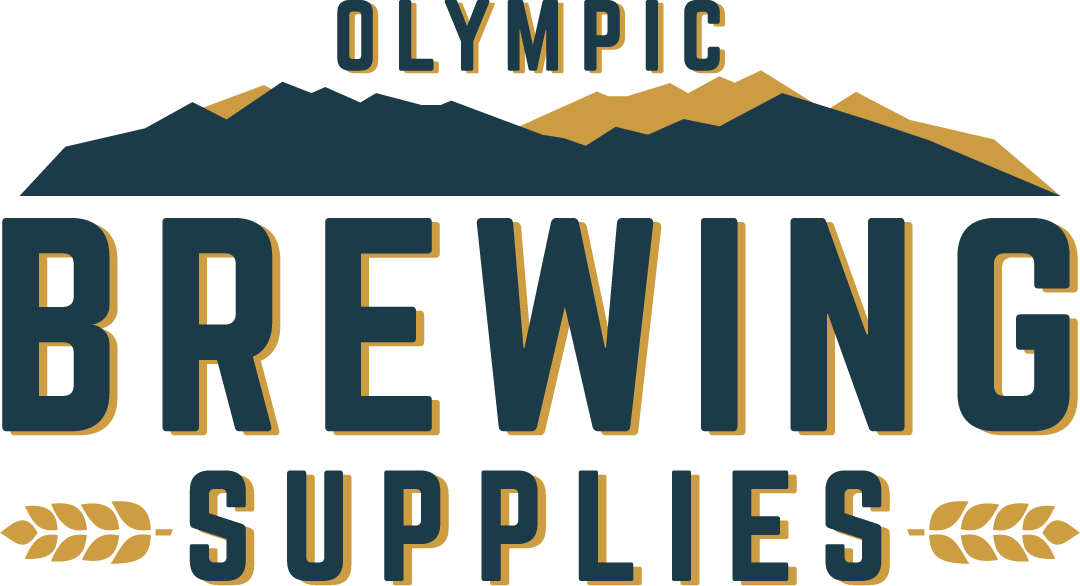Getting Bitterness from Hops
Yeast converts malt sugars in our beer to alcohol, but not all the sugars are fermentable. Those sugars left behind create a sweet malt flavor. So sweet in fact, if we don't add something to counteract or bitter it, our beer will be too sweet to be palatable. That's where hops come in. Hops will add flavor and aroma as well as bitterness to your beer, it all boils down (pun intended) to how long you boil for. Hops can be very aromatic and that same bouquet you detect from a newly opened package of hops can be imparted into your beer. Conveniently, it only takes about 2 minutes or less in the boil to get it. Here's the problem. As you begin to smell the hop aromas rising from your kettle, you're losing it from your beer. For this reason we only add our aroma hop additions for the last 2 minutes of the boil. Likewise the flavor character of a hop is imparted into your brew but begins to diminish after more than 10 minutes in the boil. So, to retain the most flavor we add our flavor hops in the last 10 minutes. As we continue to boil, our hops impart bitterness and the longer we boil, the more bitterness we get.
The bitterness in hops comes from the alpha acids they contain. Hops grown and packaged for brewing are given an alpha acid percentage on its label. These acids change from year to year. When boiled, the hop acids become dissolved into your beer. The dissolving process is slow requiring a long boil. Beer is rated for bitterness in IBUs, which stands for International Bitterness Units. You will also see bitterness labeled as HBUs (Homebrew Bitterness Units) or AAU's (Alpha Acid Units). HBU's and AAU's are simply the acid percentage multiplied by the ounces used. Example: Cascade hops at 7% times 2 ounces, equals 14 HBUs. IBUs are a more exact reflection of how bitterness imparts into your beer because it accounts for a beer's gravity (malt sugar content), boil time, extraction rate, and batch size.
Many homebrew recipes simply rely on HBUs because the boil size, time, gravity, etc., are already taken into account. Should you decide to design your own recipe, IBU calculation templates are available, but I will leave you with a simple way to convert desired IBUs into HBUs. Let's assume you are a typical homebrewer brewing a partial boil for 60 minutes, doing a 5 gallon batch, with a 1.050 gravity (about 7 lbs of liquid malt extract) and a single addition of hops for bittering. In the formula, multiply 3.5 by the hop's alpha acid percentage. The correction factor, 3.5, takes into account the time, size, and gravity of the boil.
 |
 |
| Lets say we want to make a Pale Ale with a strong bitterness of 70 IBU's using Columbus hops at 15%. | This chart illustrates a "balance line" for hop bitterness. As Specific Gravity increases, it is necessary to increase HBU's to obtain a balanced beer (not bitter, not sweet). If you choose, you can use more HBUs to bitter your beer or less to increase sweetness. This chart only applies to 5 gallon batches using the methods already discussed. |
 |
|
| First multiply 3.5 times the 15 alpha percent. This gives us 52.5. Then divide 70 IBUs by 52.5 and we get 1.35 or roughly 1 1/3 ounces. | |
| Now lets do a Hefewiezen with 15 IBUs using Hallertauer hops at 5%. | |

|


